Mimolette
The history of Isigny Sainte-Mère Mimolette
In 1909, the Chef-du-Pont cheese dairy was already producing pressed cheeses such as Gouda and Edam
Thanks to its geographical location and the nearby railway line, the cheeses were shipped to the Paris, Bordeaux and Perpignan regions, as well as to the north of France. Miners in particular ate these cheeses, which have a long shelf life.
Little by little, the Dutch began to produce these cheeses at very competitive prices, but this did not stop Isigny Sainte-Mère from continuing to produce Gouda and Edam.
Mimolette, also known as “Boule de Lille”, arrived at Isigny in 1951. The Cooperative’s general agents in the north of France were responsible for promoting this cheese, which was capable of competing with the cheeses produced in Holland.
A natural colouring agent that gives Mimolette cheese its hue
To obtain its intense orange colour, we use “annatto”, also known as urucum (Bixa orellana). Annatto is a seed extracted from the achiote tree, a shrub that grows mainly in Central America. It is a natural colouring agent that is mixed with the milk at the start of the production process.
Isigny revived Mimolette!
To make these Mimolette cheeses, the Cooperative recruited Master Cheesemakers from the North of France who brought their expertise to Isigny.
At the time, there were around thirty producers of young Mimolette throughout France. The Cooperative quickly turned to the production of Semi-Mature and Mature Mimolette to stand out from the Dutch competition and offer very high quality products.
Today, there are very few manufacturers of the cheese left in France and Holland. Mimolette is making a comeback on cheese counters, and cheesemongers are very fond of this stunning orange sphere which adorns and brightens their stalls.
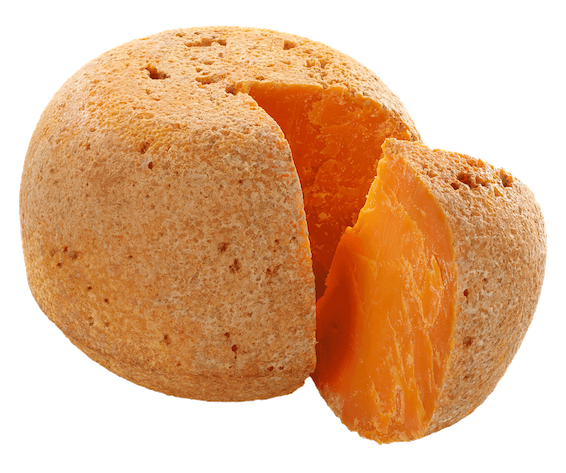
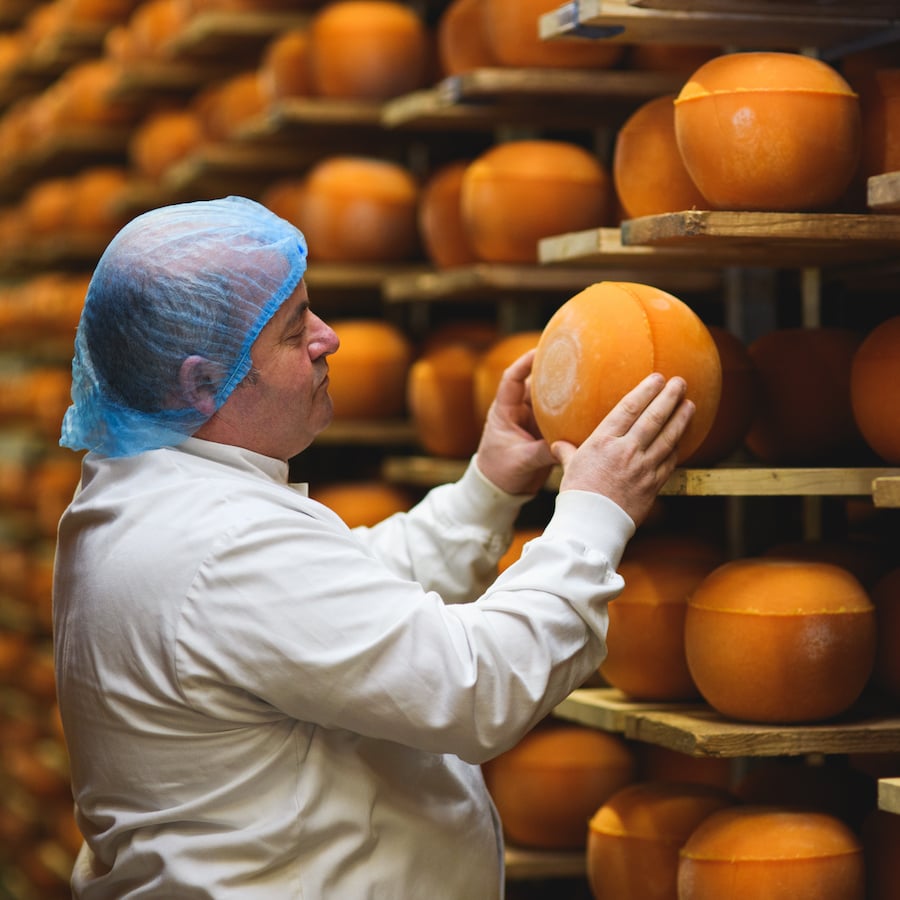
Mimolette has a subtle taste that gains more depth with age, but it also develops in appearance and texture. Soft, supple and fruity when young, our Mimolette cheeses become intense and brittle as they age.
At Isigny Sainte-Mère, making mimolette is a tradition that goes back several decades. The Cooperative was even behind the writing of the Label Rouge quality specifications for mature and extra-mature mimolette cheeses in 1988!
Isigny Sainte-Mère Mimolette cheeses are made from milk that is naturally rich and aromatic. They are then ripened in cellars with the greatest respect for tradition.
THE PRODUCTION SECRETS OF OUR MIMOLETTE CHEESES
Making a 3 kg ball of Mimolette requires 40 litres of the best Normandy milk and a few months of patience. At the end of the slow, painstaking ripening process, which can last up to 24 months, under the watchful eye of our Master Cheesemaker, the cheeses acquire a delicious nutty flavour.
Ripened in our Normandy cellars
The ripening of our Mature Mimolette cheeses begins with a brief stay in the drying cellar: a 6-week cycle during which the cheeses will “bloom”. This means that they will become covered with a fine layer of mould on which cheese mites develop.
Cheese mites play a vital role in “stripping” the rind, giving it a beautiful natural appearance. To ensure that the rind remains uniform, our master cheesemaker turns the Mimolette cheeses over regularly, looks after them, sorts them and selects them by hand to ensure optimum ripening.
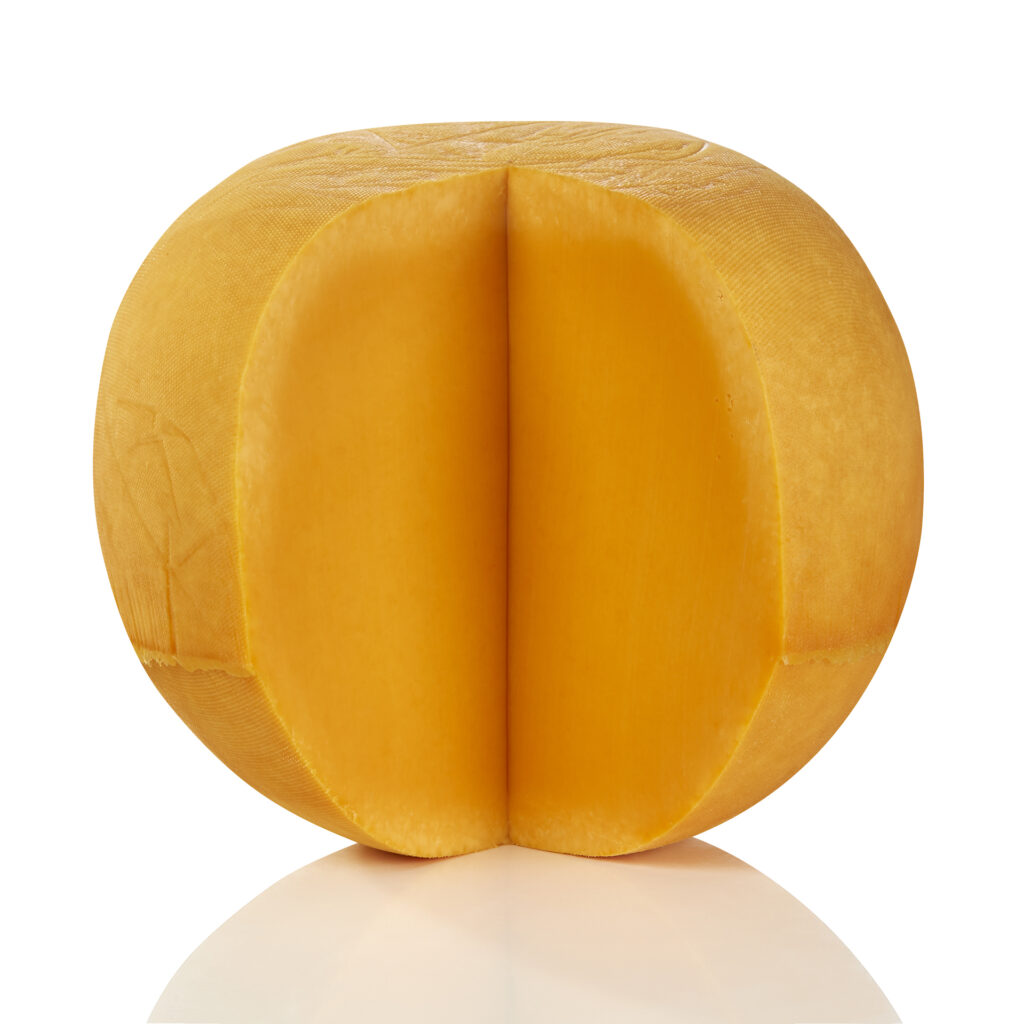
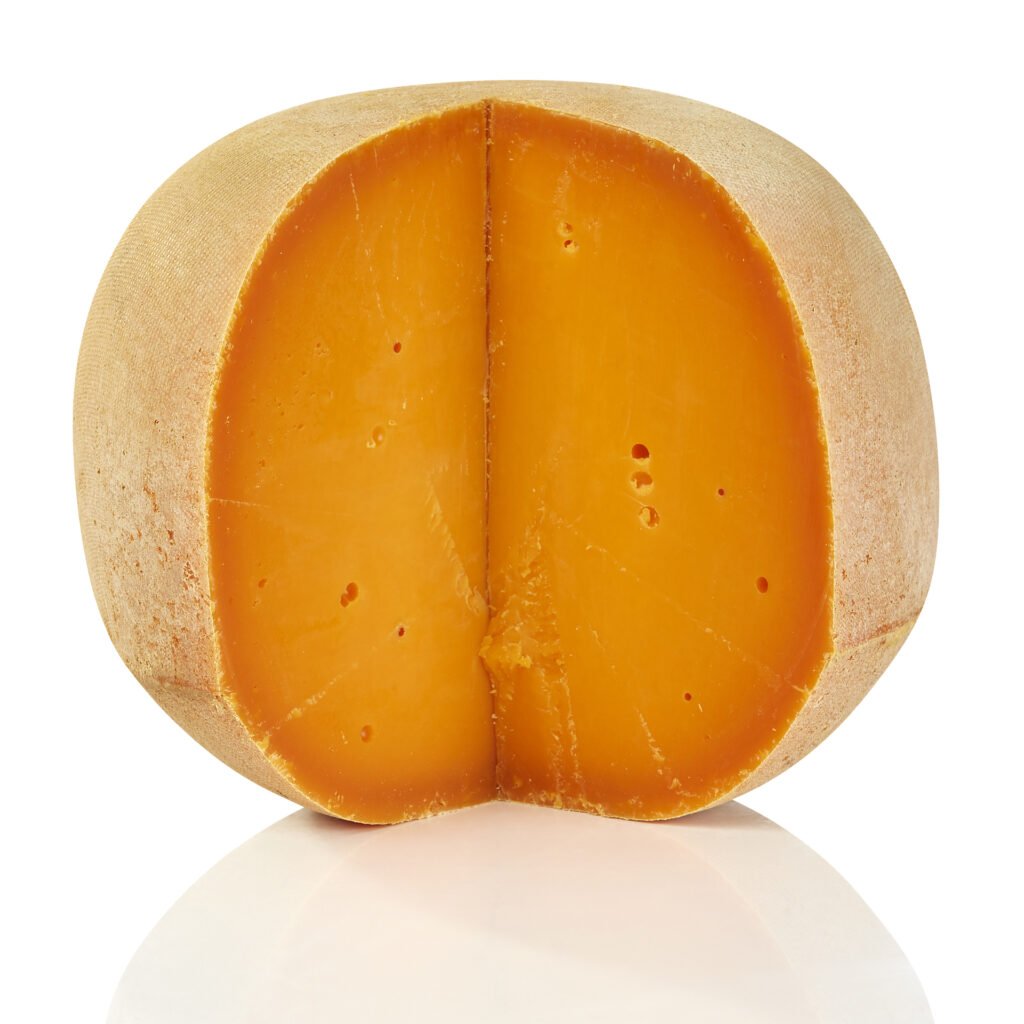
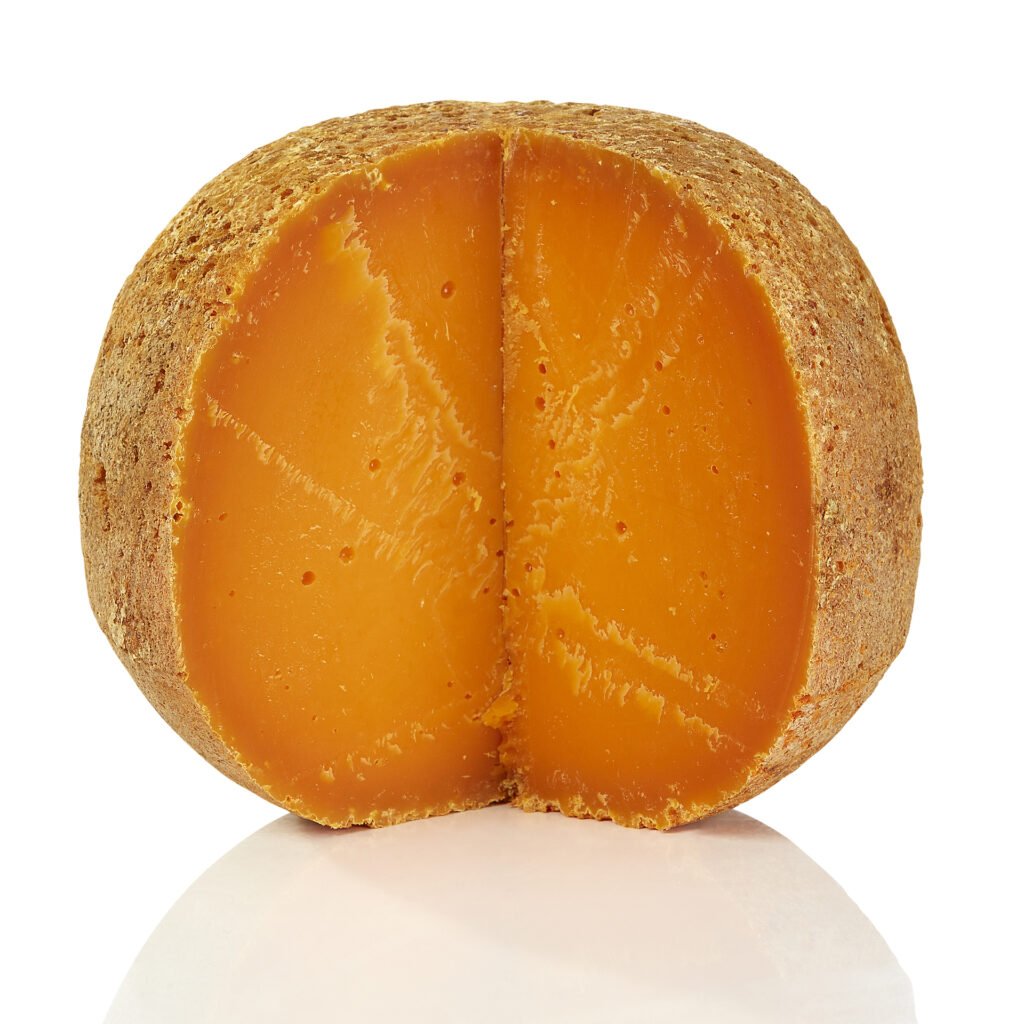
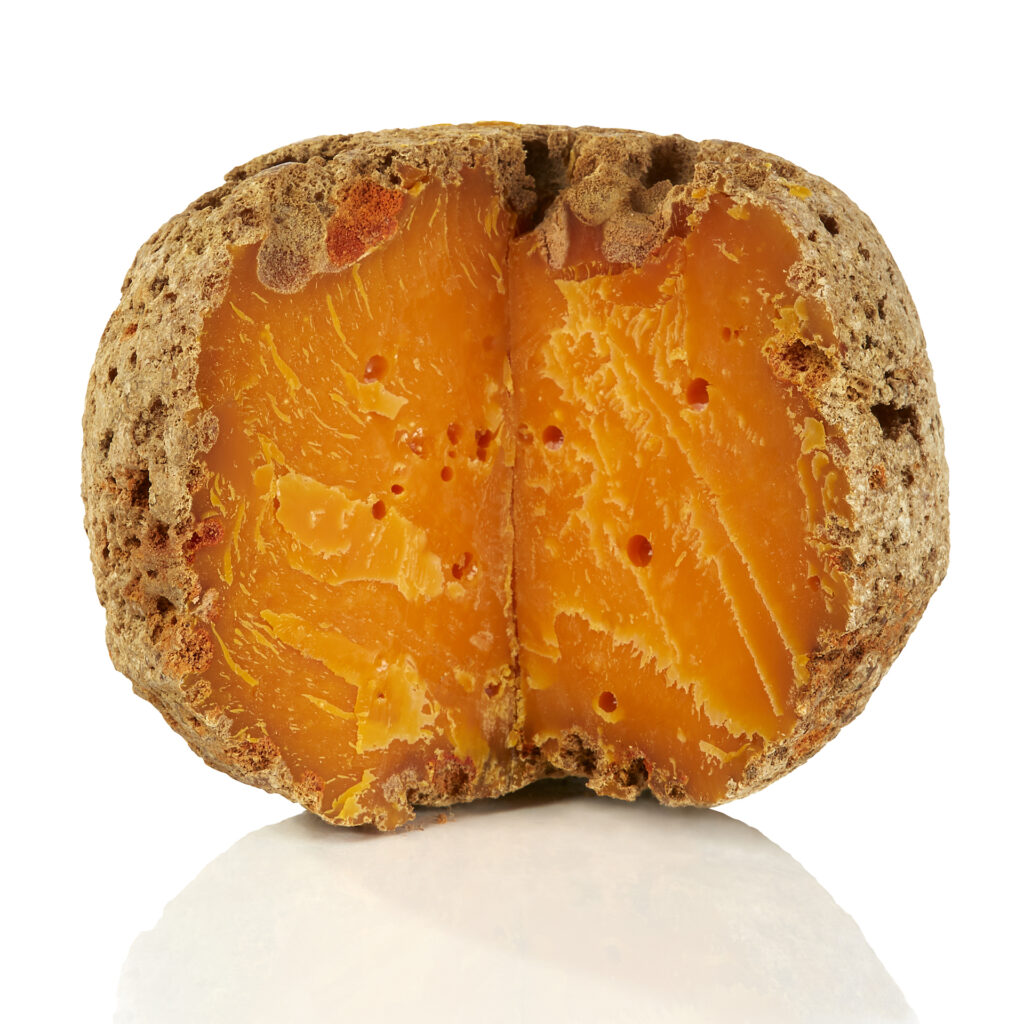
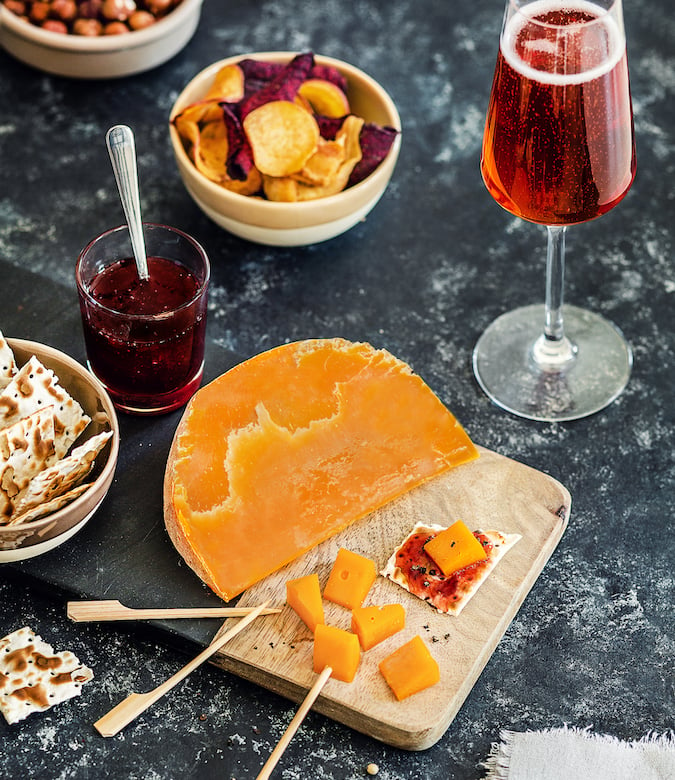
After 2 months in cellars and on boards, our young Mimolette cheeses are distinguished by their soft, generous texture, yellow-orange hue, and delicate notes of milk.
After several months in the cellar, our mimolette cheeses acquire all their specific characteristics: the flavours develop one by one, the rind takes on a beautiful grey-orange and craggy appearance.
Maintained at a constant temperature and humidity, our extra-mature Mimolette cheeses (18 months of ripening) develop a beautiful brittle texture… with a strong taste and salty notes.
The Mimolette tester
During the ripening process, our Mimolette cheeses are tapped with a boxwood mallet to test their quality and detect any structural irregularities. If it produces a muffled sound, this means that the Mimolette cheese is compliant and solid. Conversely, a hollow sound means that the cheese has holes and is non-compliant.
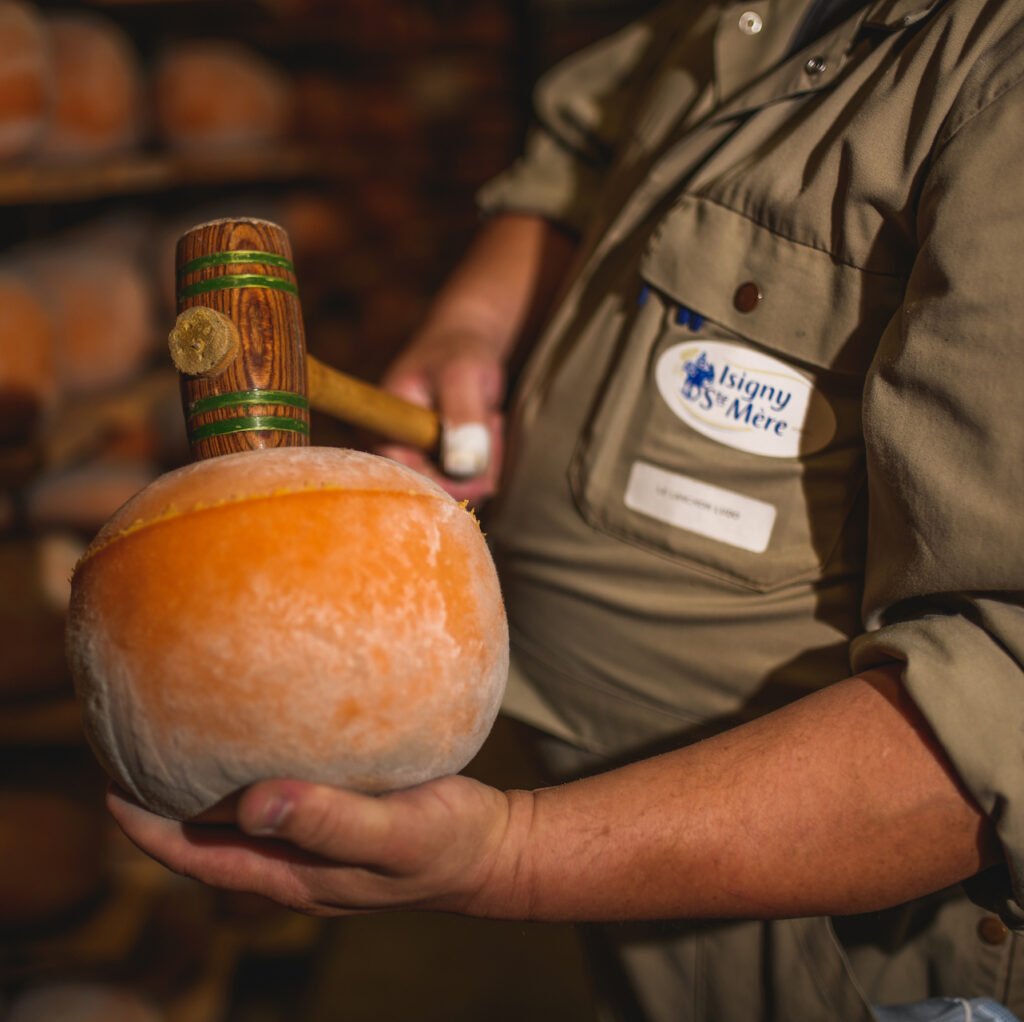
THE SENSORY PROPERTIES OF MIMOLETTE
Our Label Rouge Mature and Extra-Mature Mimolette cheeses possess irreproachable sensory characteristics, to reach a superior level of quality.
Their specifications place particular emphasis on production, processing and ripening techniques.
Label Rouge guarantees:
- Label Rouge Mimolette is an uncooked pressed cheese made from pasteurised cow’s milk.
- The milk is carefully selected and comes exclusively from traditionally reared cows
- (grazing, varied feed, etc.).
- Our Mimolette cheeses are made following a “Clean Label” recipe (no preservatives, additives or allergens)
- Mimolette is spherical in shape, flattened at the top and bottom and weighs between 2.8 kg and 3.5 kg.
- The yellow-orange colour of the rind is due exclusively to a natural colouring agent, annatto.
- The minimum ripening period for Label Rouge Extra-Mature Mimolette is 18 months.
- There are four main types of Mimolette cheese:
- Young Mimolette: ripened for 3 to 6 months,
- Semi-Mature Mimolette: ripened for 6 to 12 months,
- Mature Mimolette: ripened for at least 12 months (minimum 13 months for our Label Rouge Mature Mimolette),
- Extra-Mature Mimolette: ripened for 16 to 24 months
- Label Rouge Extra-Mature Mimolette: matured for over 18 months (up to 24 months at Isigny Sainte-Mère)
OUR SELECTION OF MIMOLETTE CHEESES
At Isigny Sainte-Mère, we have been making and ripening Mimolette cheeses since 1951! Whether young, semi-mature, extra-mature or organic, the milk used to make our balls of Mimolette comes exclusively from our terroir. They are ripened in Normandy for 3 to 24 months, combining the excellence of the terroir with the ancestral know-how of our master cheesemakers.
Characteristics of our Mimolette cheeses
- 100% French Mimolette
- Over 70 years of expertise
- Made exclusively with the best milk from our Normandy producers
- A beautiful orange rind
- Our Mimolette cheeses have won 13 medals at the Concours Général Agricole agricultural show over the last 15 years
- Our Extra-Mature Mimolette was voted Best Cheese in the World at this year’s Concours International de Lyon
Mature Mimolette and Extra-Mature Mimolette:
- A Label Rouge guaranteeing consistent product quality
- Ripened for a minimum of 13 to 24 months in our Normandy cellars
- A firm, brittle cheese with hazelnut notes
Semi-Mature Mimolette:
- Ripened for a minimum of 6 to 12 months in our Normandy cellars
Young Mimolette:
- Ripened for between 3 and 6 months in our cellars in Normandy
- A mild and supple cheese
Organic Mimolette:
- Made exclusively with organic milk from our producers in Normandy
Our Mimolette in all its forms
Discover the excellence of our terroir and the time-honoured expertise of our master cheesemakers in ready-to-eat young Mimolette cheeses. To allow you to enjoy this cheese at any time, we have created practical formats that you can take with you anywhere. Our Mimolette cubes are ideal for an aperitif, while our Mimolette slices are perfect for making sandwiches or toasties in no time at all.
Characteristics
- Cubes and slices to eat anywhere
- 100% French Mimolette cheese ripened in our cellars in Normandy
- Made exclusively with the best milk from our Normandy producers
- Thin slices to enjoy hot or cold
- Resealable packaging for optimum freshness